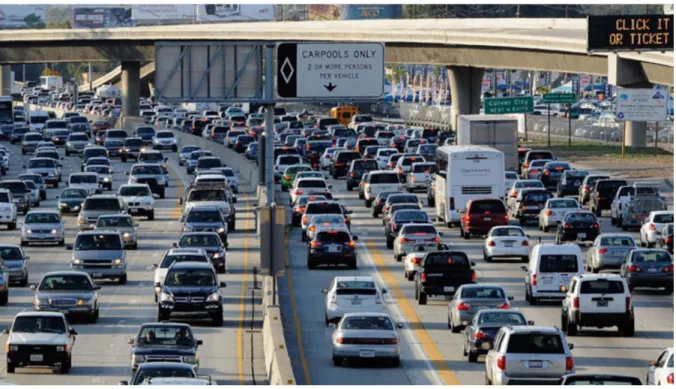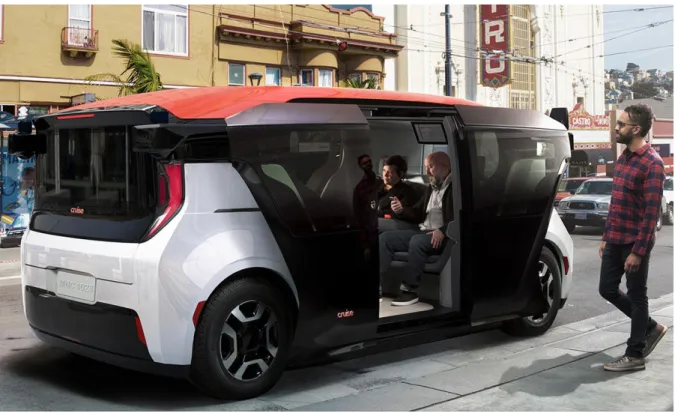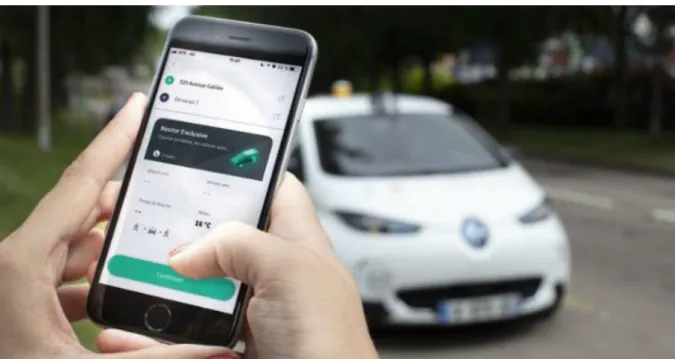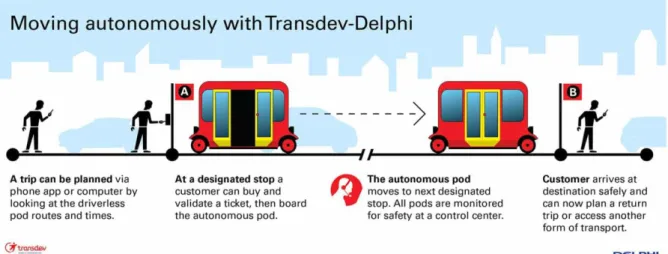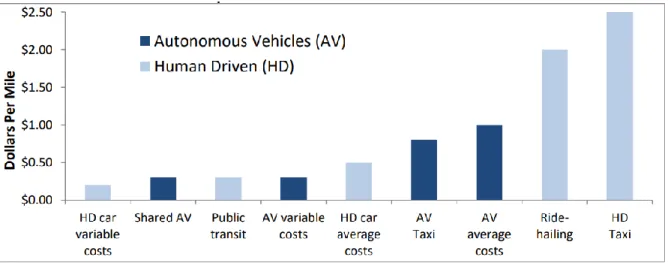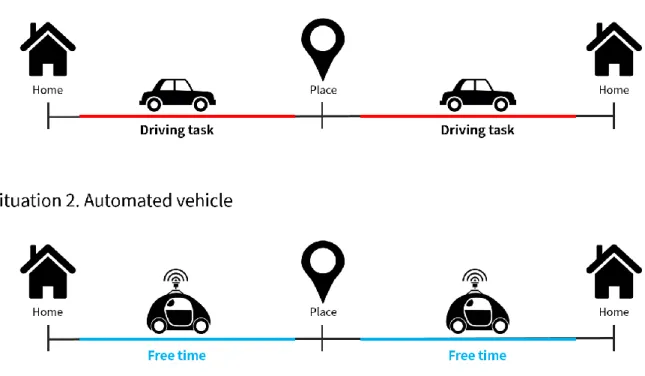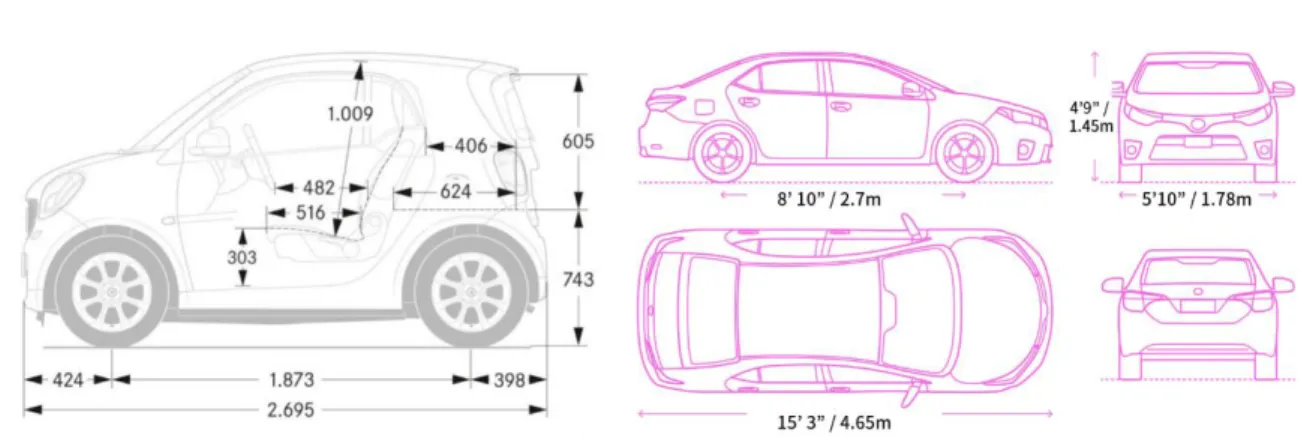Early AV was able to recognize and handle only certain driving situations, but with continuous technological development, this limitation has been removed (J. Lee et al., 2019). As the boundaries of AV technology have been removed, there has been a radical development beyond the scope of existing autonomous vehicles, and several researchers have predicted that different types of AV services will emerge in the future (Wachenfeld et al., 2016). This concept is a type of service that shares autonomous vehicles and this service can replace private conventional vehicles (PCVs) (Milakis et al., 2017).
The shared autonomous vehicle (SAV) concept, which combines existing elements of vehicle sharing and taxi services with AVs, refers to public transportation using automation technologies (Fagnant et al., 2015). In recent literature based on autonomous vehicles, SAV of public transport activities has been convincingly presented as a solution to the problem of individual PCV ownership (Fagnant & . Kockelman, 2018; Loeb et al., 2018; Vosooghi et al., 2019). . Researchers argue that SAV technology, which brings many socio-economic benefits regarding urban mobility, should be adopted early (Hörl et al., 2019; Winter et al., 2018).
In addition, relevant literature has consistently expressed concerns that technologies such as SAVs may fail if technology reliability, technology novelty, and lack of user experience (Kyriakidis et al., 2015; Schoettle & Sivak, 2014).
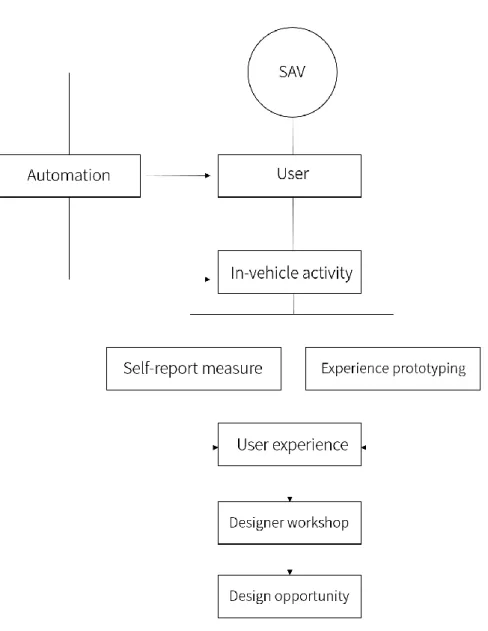
Theoretical background of research
- Introduction
- Shared Autonomous Vehicles
- Relation of SAVs to public transportation
- Major trip type in SAV
- In-vehicle activity
- Mood
The potential of AV technology is expected to have a significant impact on mobility services in the future. In the commercialization level of technology, several studies on AVs and results of road tests have been reported (Anderson et al., 2014; Basulto, 2013; Lavrinc, 2013). Therefore, transport systems in the future will be a mixed system of regular vehicles (RVs) and SAVs.
MOD systems have been argued as a key element for sustainable personal urban mobility in the 21st century (Mitchell et al., 2010). In the case of commuting, commuting by SAV can be quite attractive for city dwellers without vehicles. Some SAV users may prefer to handle their work while boarding to reduce work time in the office (Krueger et al., 2016).
In the case of passenger vehicles, there are driving tasks that can lead to lost travel time.
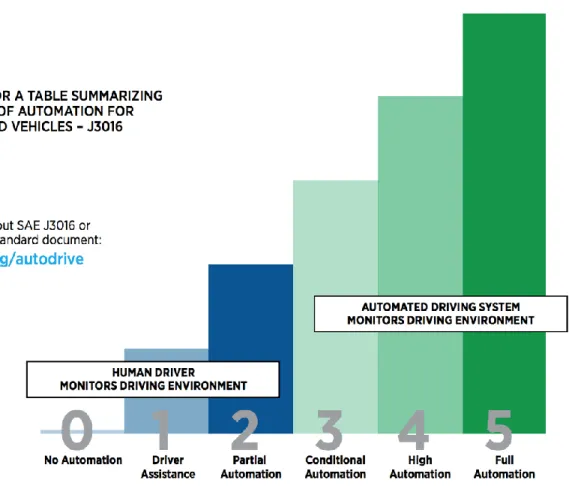
Exploring user activity and needs in SAV
- Experiment design
- Experiment stimuli
- Experience prototyping
- Method
- Self-report measurement after virtual experience
- Results
- Future passengers’ experience with SAV in commuting situations
- Future passengers’ experience with SAV in business situations
- Future passengers’ experience with SAV in leisure situations
- Data integration
- Strategies to explore design opportunities in SAV
As shown in the figure, Toyota Corolla's interior size is approximately 106 inches (2.7 m) and Smart Fortwo's interior size is approximately 73.7 inches (1.87 m). This allows direct observation of the overall user experience of what future SAV passengers will do when sharing rides in connection with travel. Both labels had magnets attached to the back so participants could easily move and attach them to the report sheet (Figure 14).
For self-reporting, A3 paper with three travel types was created to help participants express their desires and emotional feelings in space (Figure 16). This session was designed to give participants a general understanding of the SAV system and its operation. The content of the sheet is designed to set up a kind of hourly journey to the next SAV with the activities, desired moods, desires and expectations that the participants are likely to make over time.
In the case of group activities, they hoped there would be a large screen for sharing. They wanted a calm and serious atmosphere and chose 'Calm' as the most suitable adjective. In addition, participants wanted to feel 'exuberant' while communicating with others in the SAV.
The top activity rankings on the graph show that at SAV they wanted to do some of the normal activities that we do when we go on a trip with normal vehicles and 'Observe the scenery' (13%), 'Listen to music' (11%). In the discussion, most of the participants stated that they want to enjoy their trips and engage in fun activities while traveling. They wanted excitement and enjoyment in the mood and chose 'Enthusiastic' as the most appropriate adjective term.
In the case of 'Listening to music' (Top2, 12%), participants liked to do other things while listening to music. Therefore, I consider the top five user activities in the integrated chart graph as important design opportunities and focus on them.

Identify design opportunities for SAV users
Method
- Pilot test
- Designer workshop
Participants with more than three years of practical experience in the field were selected to recruit professional participants. The designer of the research base said that creating a profit structure through advertising and promotion would make it cheaper. It is necessary to ride in front and behind the vehicle or consider different structures.
First, in the case of maps, there was more data than needed, so designers were confused about which part to focus on. The designers' workshop aims to create and visualize ideas that meet the wishes and expectations related to user activities. Therefore, five professional designers were recruited to identify what design opportunities there were within the SAV to meet user needs.
In addition, we explored and discussed specific design options and solutions that can be offered to users through designer workshops. Five design-related practitioners, such as product designers, UX designers, app/web developers and a UX planner, were recruited to participate in the workshop. The criteria for recruitment were those who have graduated with a bachelor's degree in the Department of Design and have worked three years or more in this field.
The materials used in the designers' workshop were PowerPoint, SAV's interior model, map with user needs, evaluation handouts. The PowerPoint included an introduction to the study, a description of the SAV and the objectives of the workshop. In the case of maps, the cover included the appropriate image and desired mood for the five priorities of in-vehicle activities of the user.
The back page of the map shows the wishes and expectations that users want per activity (three major trip types). Through this process, design opportunities to support and encourage user activities within the SAV were expressed as visualized ideas.

Results
- Idea
- Focused elements
- Conclusion
Discussion
- Interaction opportunity enhancement
- Timely travel care
- Internal locus of control
- Borderless isolation
- Examples
- Commute
- Business
- Leisure
Comfort amenities in the SAV such as lighting, seat angles and air conditioners can be set as desired, making it easy to recreate one's environment every time you get into the SAV. It provides a reservation service in daily life repetitive, such as commuting, and provides a quality environment desired by every passenger when boarding. In particular, keywords such as personalization and modularity have been mentioned, with the designers focusing on the environment in which SAV guarantees individual privacy and the functionality of the modules to expand to group activities of more than two people if necessary.
In the case of the service, a service concept was proposed where the user's in-seat convenience devices were connected to a personal device and were seamlessly compatible when the user boarded the SAV. These services allow users to create a sense of ownership, like a private vehicle, and pre-set their rooms or spaces to customized settings before boarding when using SAV again. In the case study, I used general experimental data to apply user needs that should be considered in future SAV designs.
However, in the leisure trip type, participants preferred interaction and communication activities with other passengers and expressed design needs for shared activities. In addition, to encourage individuals to perform various activities, functions such as setting alarms are provided, and such services or systems should be close to the user and noticeable. Through experiments, I found that participants wanted to directly control various indoor climate control functions, such as seating areas, lighting, and air conditioning systems in SAV vehicles.
Specifically, SAV uses a mobile APP for booking and ordering vehicles, so that customized services such as lighting, seating angles and climate settings on private seats can be considered during the initial stage of App design. In the design workshop, to solve the problem, a method was created to place a modular partition in each seat and separate the SAV structure into four rooms. I recruited the seven participants who participated in the first experiment to use four planning opportunities for three main types of travel.
The display right in front of the seat provides entertainment elements such as news and YouTube. In the case of a trip, it can be divided into individuals or two or three or more persons.
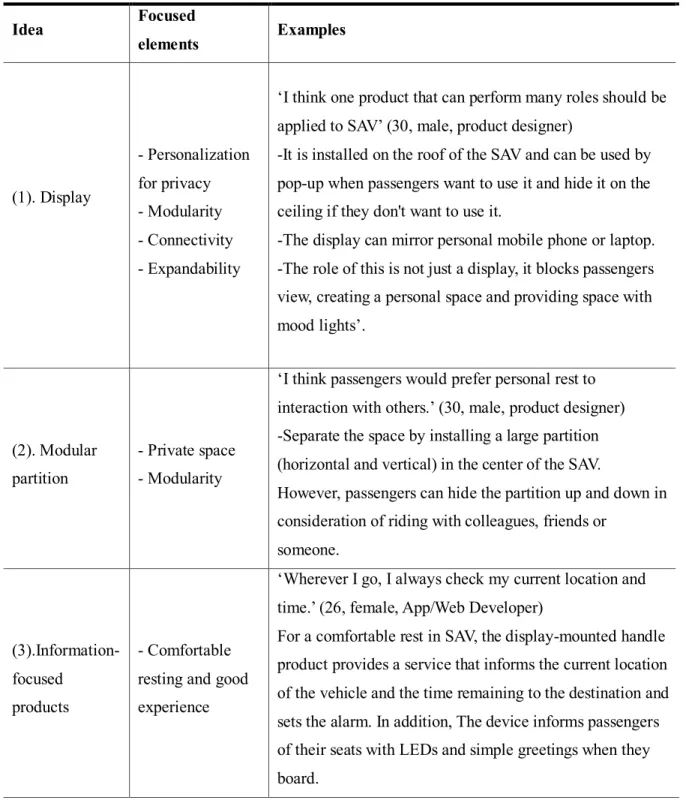
Conclusions
Design implications
Limitation and future study
Expected contributions
Rethinking Transportation Transportation disruption and the collapse of the internal combustion vehicle and petroleum industries. Operation of a shared, autonomous, electric vehicle fleet: Consequences of vehicle and charging infrastructure decisions. 2015) Self-driving cars will make us want fewer cars. In Proceedings of the 8th Conference of the International Association for Research on Emotion (pp. 30-35).
Dynamic trip allocation and fleet sizing for an autonomous shared vehicle system in Austin, Texas. The role of shared autonomous vehicle systems in delivering smart urban mobility: A systematic literature review. Analyzing the dynamic potential of ride sharing for shared autonomous vehicle fleets using mobile data from Orlando, Florida.
Modeling Americans' Preferences for Autonomous Vehicles: Focusing on Dynamic Carpooling, Privacy, and Long-Range Mode Choice. Potentials for autonomous vehicles in a changing private transport system – a case study in the Stuttgart region. Autonomous vehicles can be shared, but a sense of ownership is important: Examining the influential factors of intention to use autonomous vehicles.
A general framework for modeling shared autonomous vehicles with dynamic network load and dynamic ride sharing. Tracking a system of shared autonomous vehicles across the network of Austin, Texas using agent-based simulation. Fleet performance and cost evaluation of a shared fleet of autonomous electric vehicles (SAEV): A case study for Austin, Texas.
Shared Autonomous Electric Vehicle (SAEV) operations in the Austin, Texas network with charging infrastructure decisions. Urban transport in: Liberadzki B., Mindur L., Conditions for the development of the Polish transport system (in Polish), Wydawnictwo Instytutu Technologii Eksploatacji, Warszawa – Radom, p. Factors Affecting the Adoption of Autonomous Vehicles for Commute Trips: An Analysis Using the 2015 and 2017 Puget Sound Travel Surveys.
